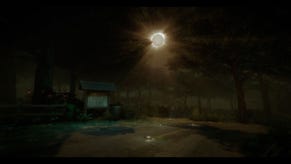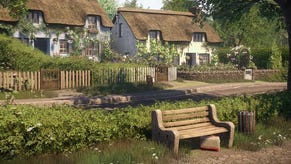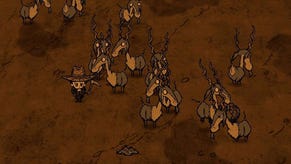Everybody's Gone to the Rapture PS4 Review: Storytelling Brilliance
Is it a game? Is it art? Either way, it's magnificent.
This article first appeared on USgamer, a partner publication of VG247. Some content, such as this article, has been migrated to VG247 for posterity after USgamer's closure - but it has not been edited or further vetted by the VG247 team.
Everybody's Gone to the Rapture takes elements of a radio play, underpins it with a core of classic science fiction literature, and wraps it into a combination of walking simulator and slice of semi-interactive drama to create a game, product, or perhaps even a piece of art, that's simply gorgeous.
The creation of The Chinese Room, the small British developer known for the largely lauded Dear Esther, and the survival horror game Amnesia: A Machine for Pigs, Everybody's Gone to the Rapture takes place in the verdant West Midlands English county of Shropshire in 1984. The twilight analog years of the pre-digital age, when cold war paranoia still played strong on peoples' minds.
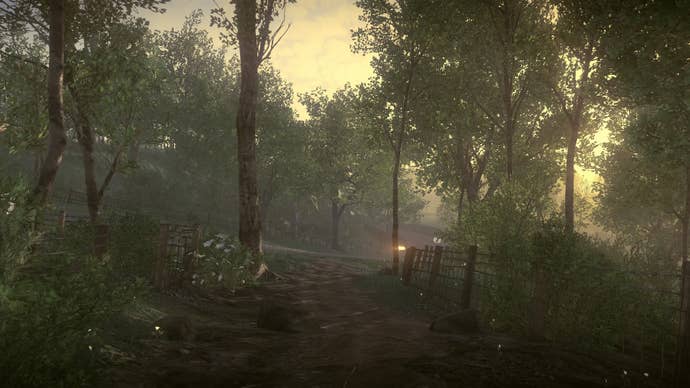
The game – and for the purposes of this review, I'm calling it a game, despite it being a piece of interactive fiction too – falls into an unusual post-apocalyptic science fiction category known as "the cozy catastrophe." Coined by Brian Aldiss in his 1973 book, Billion Year Spree: The History of Science Fiction, this particular style of sci-fi story first appeared in the decades following World War II, and was written by mostly British novelists. The most famous titles of the genre include John Wyndham's Day of the Triffids, John Christopher's The Death of Grass, and The Drowned World by JG Ballard. They're all bound by a similar premise that follows the collapse of civilization and death of the majority of the population, but where the protagonists ultimately adjust to, and even thrive in the new post-apocalyptic landscape. Even though "thriving" sometimes means casting off the vestiges of the prior civilization and embracing something completely new – as in the case of Arthur C Clarke's Childhood's End.
Yet while Everybody's Gone to the Rapture is post-apocalyptic, it looks anything but. The game opens with a view across a beautifully lush English country landscape to a quaint village in the distance. No rubble. No mutants. No disorder. No people, either. It's completely deserted, like some kind of bucolic Marie Celeste. Just blue sky, the sound of insects lazily buzzing across the fields, the rustle of a gentle breeze stirring the leaves... and a radio crackling in the distance.

Radios are an important vehicle in articulating key snatches of the story. They're found throughout the game's environment, and each is tuned to what sounds like a cold war numbers station – numerical coded messages that were sent via shortwave from behind the iron curtain during the 50's through the 80's, presumably to send instructions to operatives working undercover in countries across Europe. Though here the reason for these repeated numbers remain a mystery that has yet to be unveiled. Perhaps it's simply to provide an audio beacon to help you locate the devices – something that's important, since walking up to a radio and pressing X plays a pre-recorded piece of dialog that helps fill in the over-arching backstory.
Phones also play a key role in delivering pieces of the storyline. Like radios, they're easy to find if you listen out for them. Public phones ring, and there are early brick-like mobile phones that can also be heard. Again, interacting with them is simply through the press of a button, and a piece of audio will play, outlining a new piece of information.
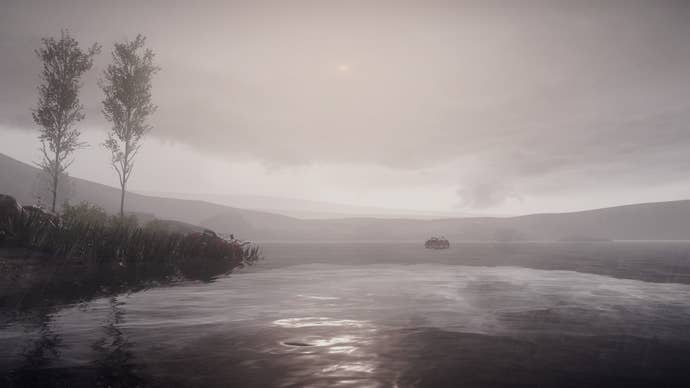
There are two other ways the story is articulated. The first is through finding what essentially feel like the after-images of conversations between people. These are played out almost like ghostly conversations that are found in numerous places, many marked on the map by strange, glowing balls of light which travel around the Shropshire countryside and help lead you through the game. The second form is basically the same as the first, but these seem to be more important: again they're moments of dialogue played out by ghostly images, but they have to be "tuned" into by tilting the joypad left and right. Sometimes setting off the event is a little awkard, as as there's little feedback to tell you whether you're doing it right or wrong, but usually a few moments of tilting the joypad from left to right will set off the scene.
As you progress through the game – with time often shifting in almost staccato fashion, causing the sun to sometimes rush across the sky for a few seconds and the shadows to chase themselves accordingly – you slowly, but surely begin to piece together the events that have transpired. You begin to get to know people, and their relationships with one another. The story begins to draw itself in, the snatches of dialog and set pieces coalescing into a somewhat interpretive narrative that ultimately becomes a full story.
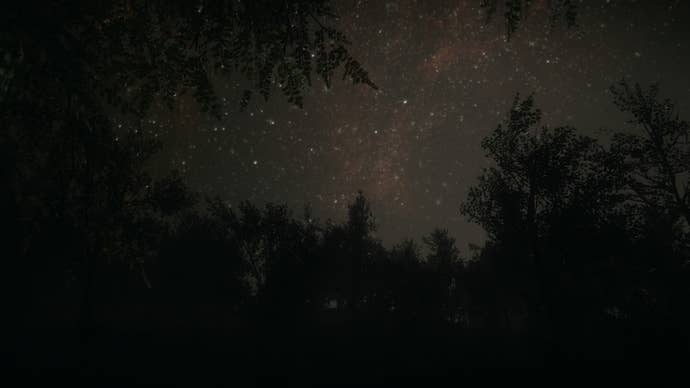
At the start of this review, I likened the game to part radio play, because in many respects it reminds me of listening to one, as I did growing up as a kid. That's also a testament to how good the voice acting is - it really is top-notch. Most of the dialog is delivered by what look like ghostly beings that have no discernable features, so you're essentially listening more than watching. And you do need to pay attention, because there's a lot of subtlety in Everybody's Gone to the Rapture. It doesn't exactly spoon-feed you with the obvious. Instead, it gives you pieces of information to think about and digest, which you need to concentrate on and listen to carefully, so that you know which character is which, and can therefore piece together the storyline. That's really the core challenge of this game. Not finding the triggers for the story – that's pretty easy on the whole, and the game is largely well directed to continually shepherd you in the right direction – but more thinking about it, and putting it all together in your head. In that sense, the game requires some imagination.
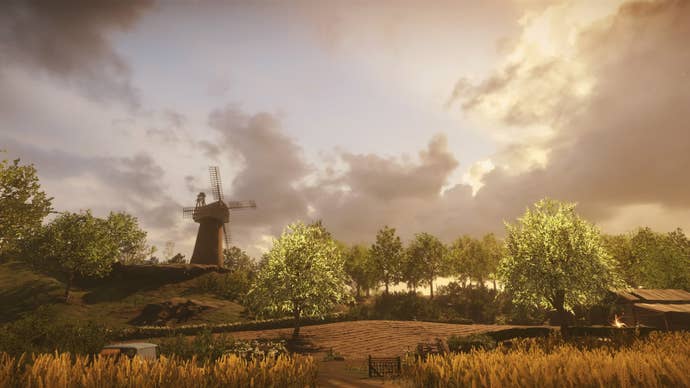
The story is slow burn, and builds superbly to a climax I won't talk about at all, because I don't want to spoil it in the least. I will say that, like much of the game, it's somewhat open to interpretation, and I feel that those who like their stories tied up with a bow might feel a little unsatisfied. But I really enjoyed it, even if I didn't feel I fully understood it the first time around. Indeed, the moment I finished it, I started the game again, because I knew I must have missed a few scenes and moments – and, as it turns out, I had. I didn't miss enough to obfuscate the overall plot, but I did feel like there were a few gaps, that I was ultimately able to fill in the second time around. Funnily enough, I actually enjoyed the game more on my second trek through it. I can't quite put my finger on why, but being more familiar with the characters and plot, and knowing where I'd gone before let me experience more of the game than I had the first time through, and listening to much of the dialog again helped bridge the gaps and answer questions that I still had.
Supporting Everybody's Gone to the Rapture great story is an absolutely astonishing environment, and some simply marvelous, melancholic music. Rendered in CryEngine, the game's environment is one of the most gorgeous I've ever seen. It truly feels like a corner of video gaming that will be forever England. The sheer attention to detail is sometimes mind-boggling. Country lanes gently twist through woods where bluebells bloom, dirt paths cut across freshly baled hay fields, and there are village greens where you can take a brief sojourn to admire the meticulous crafting of the houses, pubs, shops and outbuildings. The lighting is exceptional too, and it all comes together to create a game of simply outstanding beauty.
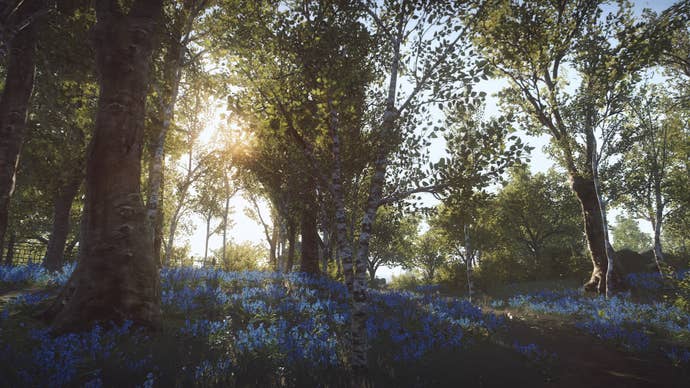
And the music is to match. Much of it is procedurally generated from a score that sounds akin to classical English composers like Vaughn Williams and Elgar. Orchestrally and chorally ambient in nature, the music fades in and out depending on where and when you are – but no matter what you're doing it seems to suit the proceedings perfectly. If the purpose of a soundtrack is to add emotion to what you're seeing, then composer Jessica Curry has done a simply sterling job.
It all comes together to create a game that's truly special. Like most games of this ilk, Everybody's Gone to the Rapture offers only a few precious hours of gameplay, but its experience is rich, with areas where you can breathe and take in the scenery. This is definitely not a game to be rushed, but instead appreciated and admired every step of the way.
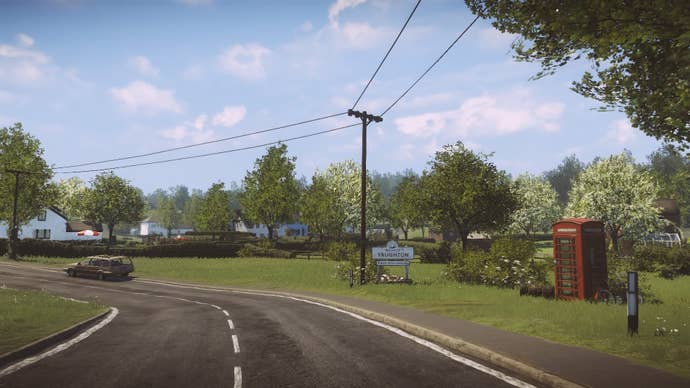
Which, of course, means it's not a game everyone will enjoy. Those looking for a more visceral experience might well get bored. Or may find the plodding cadence of the walk just a little too slow for comfort. Indeed, they might even find the storyline a little too esoteric, and the characterizations overly complex.
But for those willing to take the plunge in what is ultimately a cross between a game and an experimental piece of interactive fiction, Everybody's Gone to the Rapture combines scenes of utter beauty, touching, desperate, and sometimes even angry emotional moments between people, and a score to die for into a narrative that's gripping, involving, and thoroughly rewarding.
Brilliant!
SoundAn absolutely superb, largely procedurally-generated soundtrack imbues the game with an exceptionally melancholic atmosphere.
VisualsThe game's environment is meticulously crafted, with incredible attention to detail. It truly captures the look and feel of an idyllic rural English countryside, with some breathtaking views and vistas.
ConclusionIs Everybody's Gone to the Rapture a game, an experimental piece of interactive fiction, or is it perhaps even art? Whatever it is, the experience it delivers is a memorable one. It's gorgeous to look at, fantastic to listen to, and spins an intelligent and somewhat esoteric sci-fi mystery that's truly gripping through to its very end.


